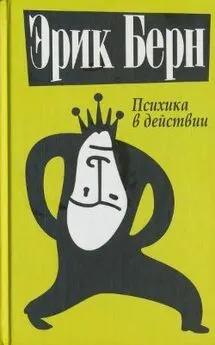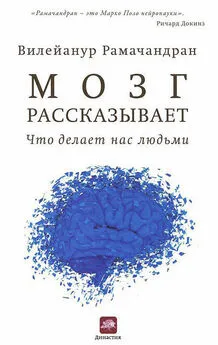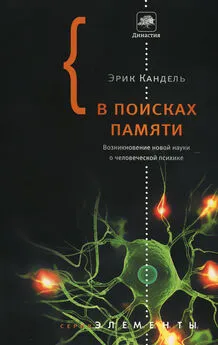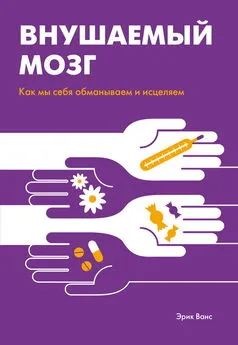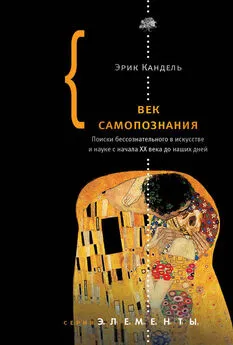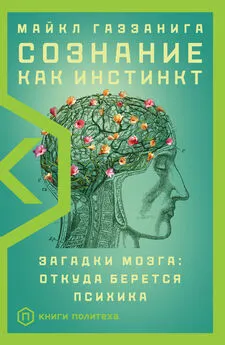Эрик Кандель - Расстроенная психика. Что рассказывает о нас необычный мозг
- Название:Расстроенная психика. Что рассказывает о нас необычный мозг
- Автор:
- Жанр:
- Издательство:Литагент Corpus
- Год:2021
- Город:М.
- ISBN:978-5-17-119013-2
- Рейтинг:
- Избранное:Добавить в избранное
-
Отзывы:
-
Ваша оценка:
Эрик Кандель - Расстроенная психика. Что рассказывает о нас необычный мозг краткое содержание
В формате PDF A4 сохранен издательский макет книги.
Расстроенная психика. Что рассказывает о нас необычный мозг - читать онлайн бесплатно ознакомительный отрывок
Интервал:
Закладка:
86Arnheim R. The artistry of psychotics // To the rescue of art: twenty-six essays. Berkeley: University of California Press, 1992.
87Power R. A. et al. Polygenic risk scores for schizophrenia and bipolar disorder predict creativity . Nature Neuroscience. 7: 953–955.
88Sample I. New study claims to find genetic link between creativity and mental illness. The Guardian. 2015 (www.theguardian.com/science/2015/jun/08/new-study-claims-to-find-genetic-link-between-creativity-and-mental-illness).
89Sherrington C. S. The integrative action of the nervous system . New Haven, CT: Yale University Press, 1906.
90Parkinson J. An essay on the shaking palsy. 1817. Journal of Neuropsychiatry and Clinical Neurosciences. 2002; 2: 223–236.
91Carlsson A., Lindqvist M., Magnusson T. 3,4-Dihydroxyphenylalanine and 5-hydroxytryptophan as reserpine antagonists . Nature. 1957; 4596: 1200.
92Carlsson A. Biochemical and pharmacological aspects of parkinsonism . Acta Neurologica Scandinavica, Supplementum. 1972; 51: 11–42.
93Carlsson A., Winblad B. Influence of age and time interval between death and autopsy on dopamine and 3-methoxytyramine levels in human basal ganglia . Journal of Neural Transmission. 1976; 3–4: 271–276.
94Ehringer H., Hornykiewicz O. Distribution of noradrenaline and dopamine (3-hydroxytyramine) in the human brain and their behavior in diseases of the extrapyramidal system. Parkinsonism and Related Disorders. 1998; 2: 53–57.
95Cotzias G. C., Van Woert M. H., Schiffer L. M. Aromatic amino acids and modification of parkinsonism. New England Journal of Medicine. 1967; 7: 374–379.
96Bergman H., Wichmann T., DeLong M. R. Reversal of experimental parkinsonism by lesions of the supthalamic nucleus . Science. 1990; 249: 1436–1438.
97DeLong M. R. Primate models of movement disorders of basal ganglia origin . Trends in Neurosciences. 1990; 7: 281–285.
98Housman D., Gusella J. R. Application of recombinant DNA techniques to neurogenetic disorders. Research Publications – Association for Research in Nervous and Mental Disorders. 1983; 60: 167–172.
99The Huntington’s disease collaborative research group. A novel gene containing a trinucleotide repeat that is expanded and unstable on Huntington’s disease chromosomes . Cell. 1993; 72: 971–983.
100Prusiner S. B. Novel proteinaceous infectious particles cause scrapie . Science. 1982; 4542: 136–144.
101Prusiner S. B. Madness and memory: the discovery of prions – a new biological principle of disease. New Haven, CT: Yale University Press, 2014.
102Feany M. B., Bender W. W. A drosophila model of Parkinson’s disease . Nature. 2000; 6776: 394–398.
103James W. What is an emotion? Mind. 1884; 34: 190.
104Aristotle. The Nicomachean ethics / Brown L. (ed.), Ross D. (trans.). Oxford: Oxford University Press, 2009.
105Blakeslee S. Using rats to trace anatomy of fear, biology of emotion . New York Times. 1996.
106Foa E. B., McLean C. P. The efficacy of exposure therapy for anxiety-related disorders and its underlying mechanisms: the case of OCD and PTSD. Annual Review of Clinical Psychology. 2016; 12: 1–28.
107Rothbaum B. O. et al. Virtual reality exposure therapy for Vietnam veterans with posttraumatic stress disorder . Journal of Clinical Psychiatry. 2001; 8: 617–622.
108Mayford M., Siegelbaum S. A., Kandel E. R. Synapses and memory storage . Cold Spring Harbor Perspectives in Biology. 2012; 6: a005751.
109Brunet A. et al. Effect of post-retrieval propranolol on psychophysiologic responding during supsequent script-driven traumatic imagery in post-traumatic stress disorder . Journal of Psychiatric Research. 2008; 6: 503–506.
110James W. The principles of psychology (vol. 2). New York: Henry Holt and Company, 1913.
111Damasio A. R. Descartes’ error: emotion, reason, and the human brain . New York: G. P. Putnam’s Sons, 1994.
112Greene J. D. et al. An fMRI investigation of emotional engagement in moral judgment . Science. 2001; 293: 2105–2108.
113Kiehl K. K., Hoffman M. B. The criminal psychopath: history, neuroscience, treatment, and economics. Jurimetrics. 2011; 51: 355–397.
114Cope L. M. et al. Abnormal brain structure in youth who commit homicide. NeuroImage Clinical. 2014; 4: 800–807.
115Bush M. Young killers’ brains are different, study shows. Albuquerque Journal. 2014.
116Olds J., Milner P. Positive reinforcement produced by electrical stimulation of septal area and other regions of rat brain . Journal of Comparative and Physiological Psychology. 1954; 6: 419–427.
117Schultz W. Neuronal reward and decision signals: from theories to data . Physiological Reviews. 2015; 3: 853–951.
118Volkow N. D. et al. Dopamine in drug abuse and addiction: results of imaging studies and treatment implications . Archives of Neurology. 2007; 11: 1575–1579.
119Robins L. N. Vietnam veterans’ rapid recovery from heroin addiction: a fluke or normal expectation? Addiction. 1993; 8: 1041–1054.
120Volkow N. D., Fowler J. S., Wang G.-L. The addicted human brain: insights from imaging studies. Journal of Clinical Investigation. 2003; 10: 1444–51.
121Volkow N. D., Koob G. F., McLellan A. T. Neurobiologic advances from the brain disease model of addiction. New England Journal of Medicine. 2016; 4: 363–371.
122Nestler E. J. On a quest to understand and alter abnormally expressed genes that promote addiction . Brain and Behavior Research Foundation Quarterly. 2015; 10–11.
123Kandel E. R. The molecular biology of memory: cAMP, PKA, CRE, CREB-1, CREB-2, and CPEB . Molecular Brain. 2012; 5: 14.
124Selim J. Molecular psychiatrist Eric Nestler: it’s a hard habit to break . Discover. 2001 (http://discovermagazine.com/2001/oct/breakdialogue).
125Nestler E. J. Genes and addiction . Nature Genetics. 2000; 3: 277–281.
126Kandel E. R., Kandel D. B. A molecular basis for nicotine as a gateway drug . New England Journal of Medicine. 2014; 371: 932–943.
127Huang Y.-Y. et al. Nicotine primes the effect of cocaine on the induction of LTP in the amygdale . Neuropharmacology. 2013; 74: 126–134.
128Burger K. S., Stice E. Frequent ice cream consumption is associated with reduced striatal response to receipt of an ice cream-based milkshake . American Journal of Clinical Nutrition. 2012; 4: 810–817.
129Christakis N. A., Fowler J. H. The spread of obesity in a large social network over 32 years . New England Journal of Medicine. 2007; 357: 370–379.
130Katz J. Drug deaths in America are rising faster than ever. The New York Times. 2017.
131Spack N. How I help transgender teens become who they want to be. TED. 2013 (https://www.ted.com/talks/norman_spack_how_i_help_transgender_ teens_become_who_they_want_to_be).
132Ellin A. Elective surgery, needed to survive . The New York Times. 2017.
133Anderson D. J. Optogenetics, sex, and violence in the brain: implications for psychiatry. Biological Psychiatry. 2012; 12: 1081–1089.
134Bergan J. F., Ben-Shaul Y., Dulac C. Sex-specific processing of social cues in the medial amygdala. eLife. 2014; 3: e02743.
135Swaab D. F., Garcia-Falgueras A. Sexual differentiation of the human brain in relation to gender identity and sexual orientation . Functional Neurology. 2009; 1: 17–28.
136Rudacille D. The riddle of gender: science, activism, and transgender rights . New York: Pantheon, 2005.
137Maddox S. Barres elected to national academy of sciences . Research News, Christopher and Dana Reeve Foundation. 2013 (www.spinalcordinjury-paralysis.org/blogs/18/1601).
138Jenner C. The secrets of my life . New York: Grand Central Publishing, 2017.
139Ehrensaft D. Gender nonconforming youth: current perspectives . Adolescent Health, Medicine and Therapeutics. 2017; 8: 57–67.
140Reardon S. Largest ever study of transgender teenagers set to kick off . Nature News. 2016 (www.nature.com/news/largest-ever-study-of-transgender-teenagers-set-to-kick-off-1.19637).
141Lee H. et al. Scalable control of mounting and attack by Esr1 + neurons in the ventromedial hypothalamus . Nature. 2014; 509: 627–632.
142Baars B. J. A cognitive theory of consciousness . Cambridge, U. K.: Cambridge University Press, 1988.
143Dehaene S. Consciousness and the brain: deciphering how the brain codes our thoughts. New York: Viking, 2014.
144Salzman C. D. et al. Microstimulation in visual area MT: effects on direction discrimination performance . Journal of Neuroscience. 1992; 6: 2331–2355.
145Salzman C. D., Newsome W. T. Neural mechanisms for forming a perceptual decision . Science. 1994; 5156: 231–237.
146Logothetis N. K., Schall J. D. Neuronal correlates of supjective visual perception . Science. 1989; 4919: 761–763.
147Logothetis N. K. Vision: a window into consciousness. Scientific American. 2006 (www.scientificamerican.com/article/vision-a-window-into-consciousness/).
148Wilson T. D. Strangers to ourselves: discovering the adaptive unconscious. Cambridge, MA: Harvard University Press, 2002.
149Wilson T. D., Schooler J. W. Thinking too much: introspection can reduce the quality of preferences and decisions . Journal of Personality and Social Psychology. 1991; 2: 181–192.
150Libet B. et al. Time of conscious intention to act in relation to onset of cerebral activity (readiness-potential): the unconscious initiation of a freely voluntary act . Brain. 1983; 106: 623–642.
151Tversky A., Kahneman D. The framing of decisions and the psychology of choice . Science. 1981; 4481: 453–458.
152Kahneman D. Thinking, fast and slow . New York: Farrar, Straus and Giroux, 2011.
153Craig A. D. How do you feel – now? The anterior insula and human awareness . Nature Reviews Neuroscience. 2009; 10: 59–70.
154Critchley H. D. et al. Neural systems supporting interoceptive awareness . Nature Neuroscience. 2004; 2: 189–195.
155Wimmer G. E., Shohamy D. Preference by association: how memory mechanisms in the hippocampus bias decisions. Science. 2012; 6104: 270–273.
156Shadlen M. N., Kiani R. Consciousness as a decision to engage // Dehaene S., Christen Y. (eds.). Characterizing consciousness: from cognition to the clinic? Berlin and Heidelberg: Springer-Verlag, 2011.
Сведения об иллюстрациях
Если не указано иное, большинство иллюстраций создала или адаптировала Сара Мэк. Иллюстрации с изображением мозга создала Тереза Уинслоу.
Фотография окрашивания по Гольджи. Автор – Боб Джейкобс.
Фотография Уты Фрит. Использована с разрешения.
Схемы движения глаз. Использованы с разрешения Springer ; любезно предоставлены Кевином А. Пелфри.
Схема теории психики. Использована с разрешения Elsevier Books .
Читать дальшеИнтервал:
Закладка:

